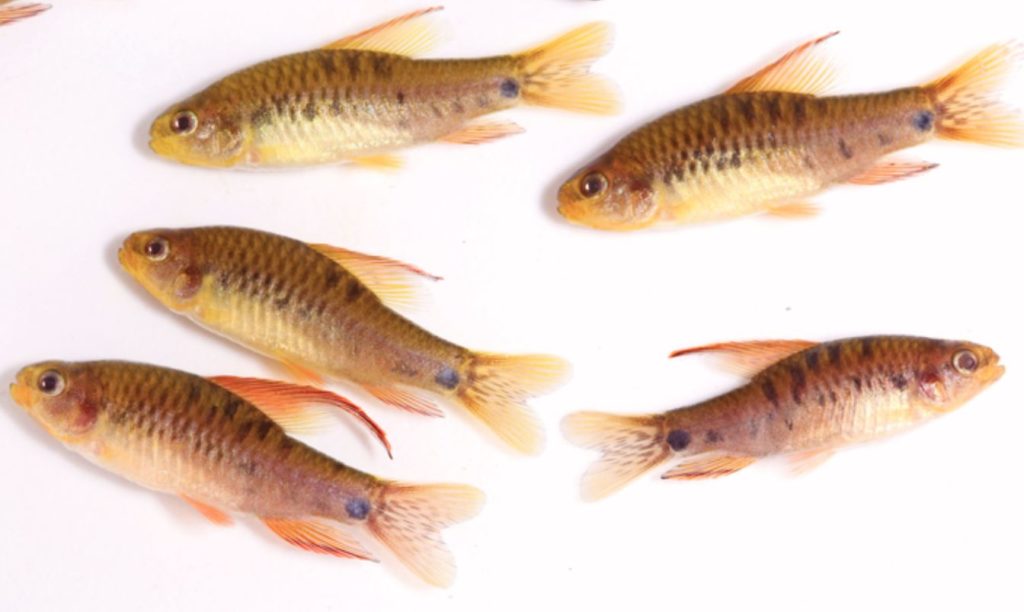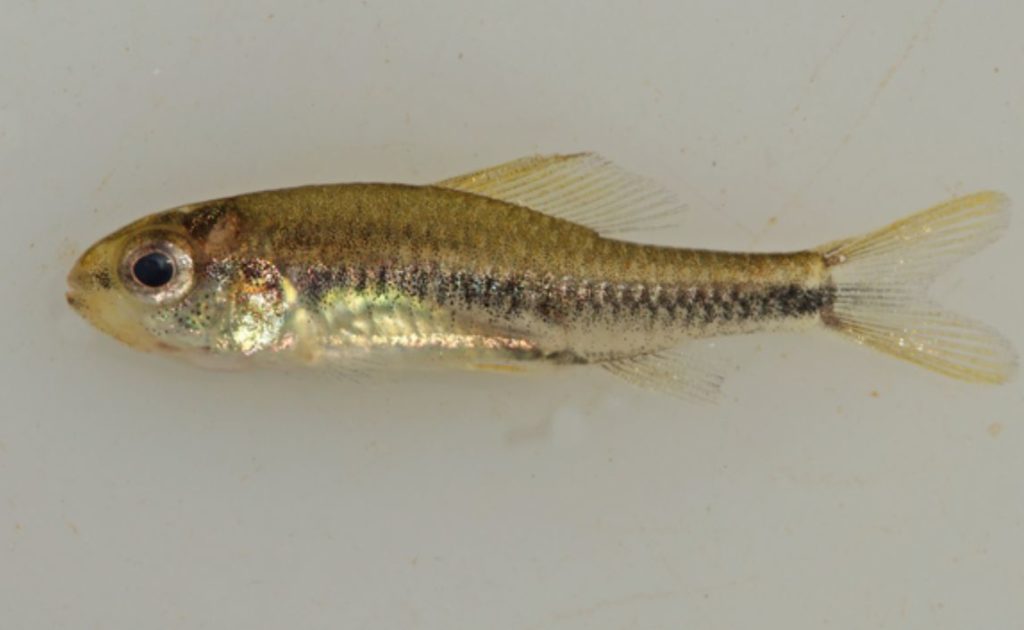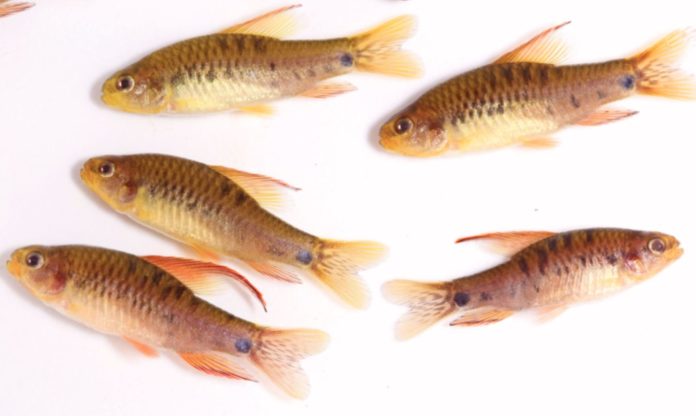Both species live in waters about 25 miles north of the Brazilian city of Apu, on the verge of human encroachment into the Amazon jungle.
In an article published today in the Zoological Journal of the Linnean Society, Smithsonian researcher Murilo Pastana and his colleagues describe two new Amazonian fish species, one with spectacular red-orange fins and the other so small it is technically designated a miniature fish species.
Both species live in waters about 25 miles north of the Brazilian city of Apu, on the verge of human incursion into the Amazon jungle.
According to Pastana and his co-authors, Willian Ohara of the Federal University of Rondônia and Priscila Camelier of the Federal University of Bahia, ongoing deforestation in the region puts these roughly inch-long fish, which are part of a group known colloquially as South American darters, in imminent danger of extinction.

Poecilocharax callipterus, the more colorful of the two species, is particularly vulnerable because its known distribution is restricted to a single stream covering around 1.5 square miles of habitat.
“It was exciting to find new species,” said the authors. “But in the field, we saw the forest on fire, logging trucks carrying out huge trees, and cleared patches turned into cattle pasture. This made us feel a lot of urgency to document these species and publish this paper as quickly as possible.”
Pastana is a Brazilian-born scientist who is passionate about conserving the country’s biological history. He hopes that by naming and characterizing these species, the Brazilian government would be motivated to safeguard and conserve these newly discovered, endangered fishes.
Aquarium hobbyists are likewise eager to add these previously unknown fish species to their collections. Even as scientists are formally identifying and learning of the existence of these two new species, Pastana, whose work is supported by the Smithsonian’s Sara E. and Bruce B. Collette Postdoctoral Fellowship in Systematic Ichthyology, believes that the exotic aquarium fish trade could pose yet another threat to them.

Aquarium hobbyists are likewise eager to add these previously unknown fish species to their collections. Even as scientists are formally identifying and learning of the existence of these two new species, Pastana, whose work is supported by the Smithsonian’s Sara E. and Bruce B. Collette Postdoctoral Fellowship in Systematic Ichthyology, believes that the exotic aquarium fish trade could pose yet another threat to them.
“We went to sample places that have never been visited by scientists,” Pastana added. “This area is really important because this is one of the frontiers where deforestation is moving north—the border between new cities and native forest.”
According to a recent ranking of Brazilian municipalities with the highest deforestation rates, the Apu region, where these scientific studies were conducted, ranks second. Ironically, the same roads that contribute to the region’s rapid loss of habitat also provided Pastana and his colleagues with access to previously inaccessible streams, ponds, and tributaries.
So, in 2015 and 2016, Pastana and others camped beside AM-174, catching fish with nets, traps, and other means. All of the specimens were photographed, cataloged, and archived for future research at the University of So Paulo’s Museum of Zoology.
One of them has bright red-orange fins and a conspicuous dark patch directly in front of its tail. Pastana claims that this fish quickly stood out as a novel species. The fish, which has been given the name P. callipterus, lives on the outskirts of a black water stream, so named because the water is tinted black by tannins leached from fallen leaves. Males have much more dramatic colors and dorsal fins that can reach half their total length, which is just over an inch. On the 2016 return trip, Pastana and his colleagues were only able to find P. callipterus in the stream where it was first discovered, despite targeted efforts to find it in the surrounding area.
On these field missions, researchers discovered the second new species among tangles of tree roots projecting from the banks of muddy moistened streams, which are distinct from the comparatively clear, if darkly stained, black water streams. This species is called P. rhizophilus because it likes roots (rhiz). Males of this species have dark streaks on their dorsal and anal fins, which is how they got their scientific name. But arguably the most distinguishing feature of this new species is that it is so small that scientists classify it as a miniature, a term used to describe any fish that is less than an inch long when fully grown, according to Pastana. He went on to say that a lab examination indicated that sections of the skeleton in these three-quarter-inch-long fish are formed of cartilage rather than bone.
The evolutionary link of these two new closely related species and their relatives was proven through genetic studies, bringing the total number of species in their small subfamily (Crenuchinae) to five. This is the first time in 57 years that a new species has been added to the group.
These fishes, Pastana said, are like works of art and “losing either of these species would be like losing priceless masterpieces.”
Like masterworks from Monet or Picasso, each species is full of irreplaceable details that might bear some resemblance to other creatures on Earth but in concert are utterly unique. Extinction would cause all those details, wrought over millions of years of evolution, to blink out.
“You’d lose everything about these species,” he said.
Funding and support for this research were provided by the Smithsonian and the São Paulo Research Foundation.
Image Credit: Getty
You were reading: Two Newly Described Freshwater Fish Species Wrestling To Survive
